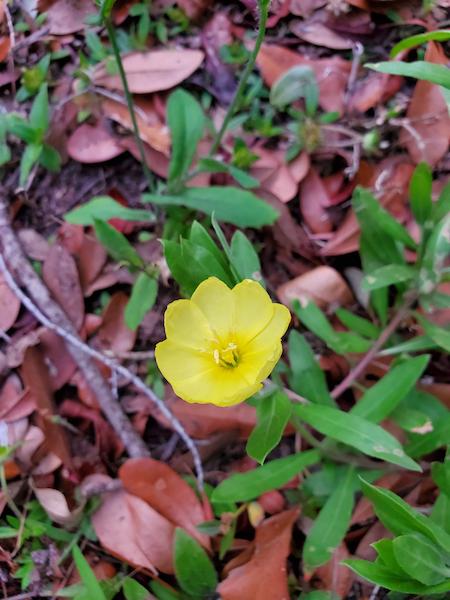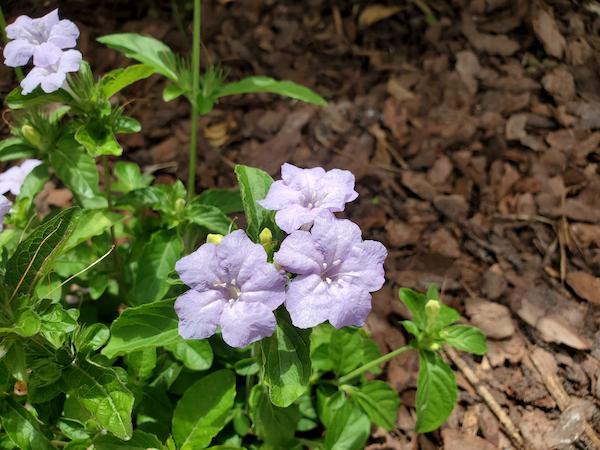Chlorophyll, my beloved
My love affair with plants started with houseplants in an apartment, but things really picked up after I moved back home and had some land to work with.
I started with tropicals and common annuals, but soon moved on to Florida's native plants. The marigolds and pansies I planted were lovely, but it wasn't until I added some locally native flowers that the garden truly came to life.
Here, I've collected some of my favorite photos of local wildflowers, plants from the garden, and the insects that flock to them.
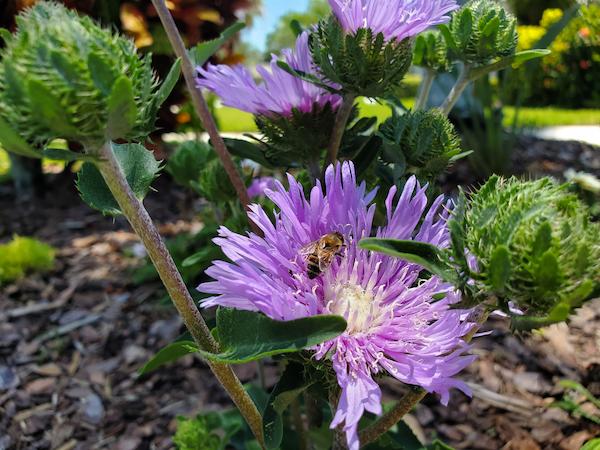
Stoke's Aster (Stokesia laevis)
This beautiful flower is native to the southeastern United States and is the only member of its genus. In Florida, it blooms almost all year. Its large, lacy blooms attract all sorts of native bees, as well as non-native bees like this honey bee.
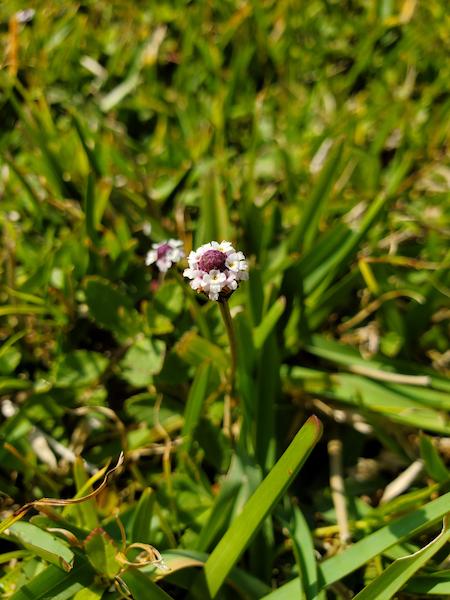
Frogfruit (Phyla nodiflora)
This low-growing member of the Verbena family often makes its home in moist patches of lawns, but I don't consider it a weed at all. The tiny flowers attract butterflies and the leaves feed their caterpillars.
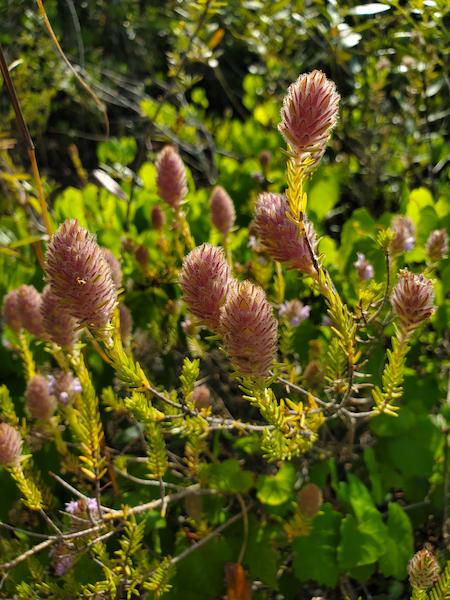
Florida Pennyroyal (Piloblephis rigida)
This member of the mint family has lovely little purple flowers, but what really caught my eye was the dusty pink maturing seed heads.
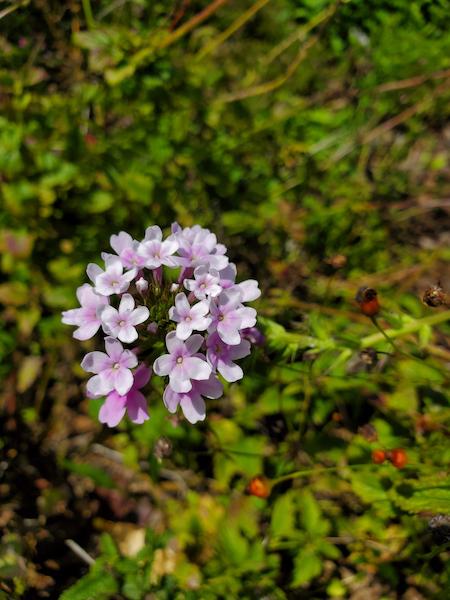
Tampa Verbena (Glandularia tampensis)
This species is endemic to Florida, only known to grow in coastal counties on either side of the peninsula.
Florida's Glandularia species are rare in the wild and considered endangered.
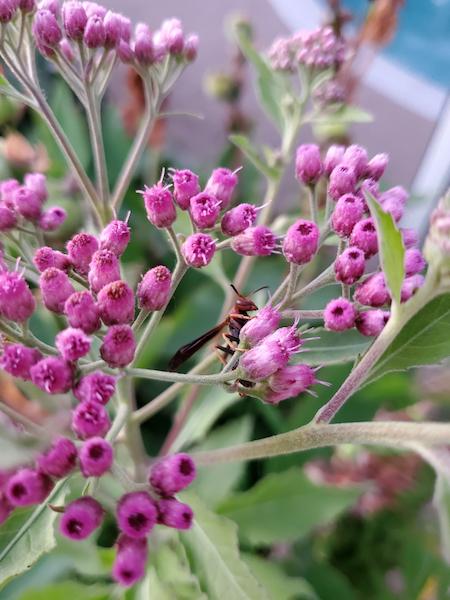
Saltmarsh Fleabane (Pluchea odorata)
This stinky member of the sunflower family has great color and serves as a fantastic food source for pollinators like this paper wasp.
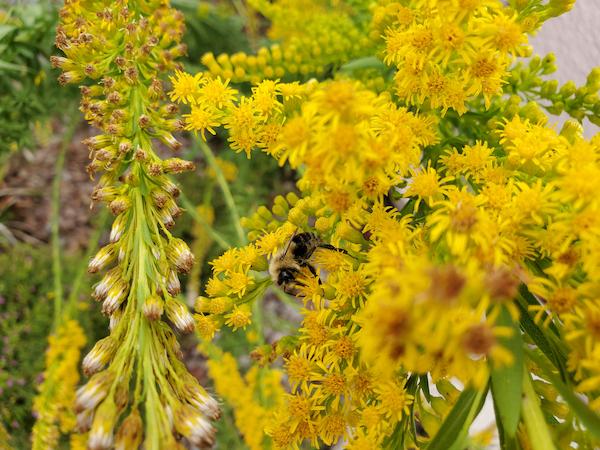
Seaside Goldenrod (Solidago sempervirens)
Native to the sand dunes, this goldenrod becomes a different beast in the mesic garden bed. Left alone, my specimen towered above my head!
When these plants bloom in the autumn, natvie bumble bees swarm all over the countless yellow flowers. It's really a sight to behold.
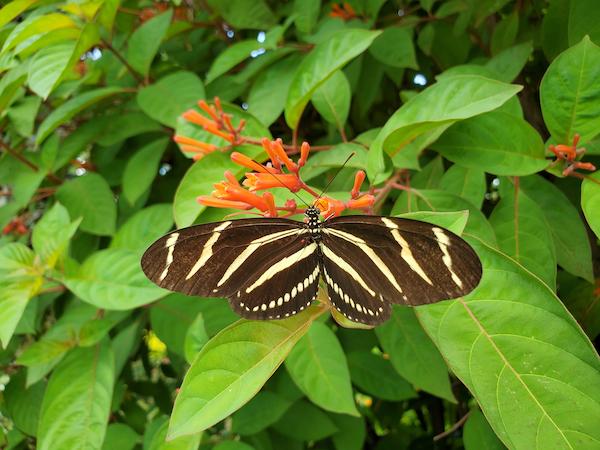
Firebush (Hamelia patens var. patens)
Firebush is a large shrub that supports a wide variety of creatures. Its leaves host caterpillars, its flowers feed butterflies and long-tongued bees, and its fruits are enjoyed by birds.
A specimen at my favorite local nursery is usually covered in zebra longwing butterflies when they're in the area. Firebush is commonly available, but make sure you get the native subspecies!
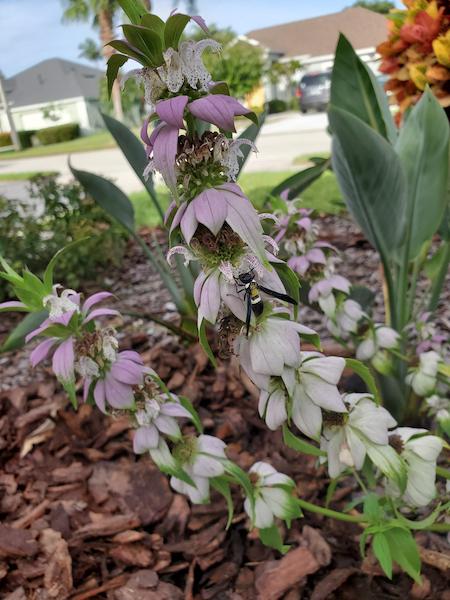
Spotted Beebalm (Monarda punctata)
Unlike other Monarda species, this one has stacked flowers sat upon showy bracts—like a botanical pagoda. When the blooms peak in late summer, these plants attract half a dozen different species of native bees and wasps at a time, like this four-toothed mason wasp. They really bring the garden to life.
You can also use it as a weak mint substitute since the leaves contain menthol. Truly a top-tier plant.
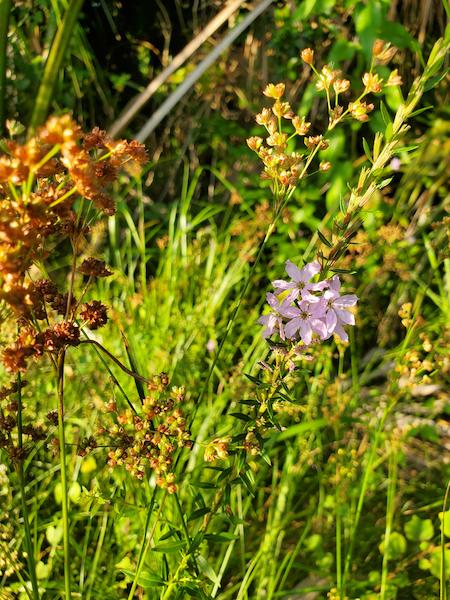
Winged Loosestrife (Lythrum alatum)
Aren't these pink flowers pretty? This plant is related to Mexican Heather, a common Florida-Friendly garden subshrub. I think I prefer the wild one.
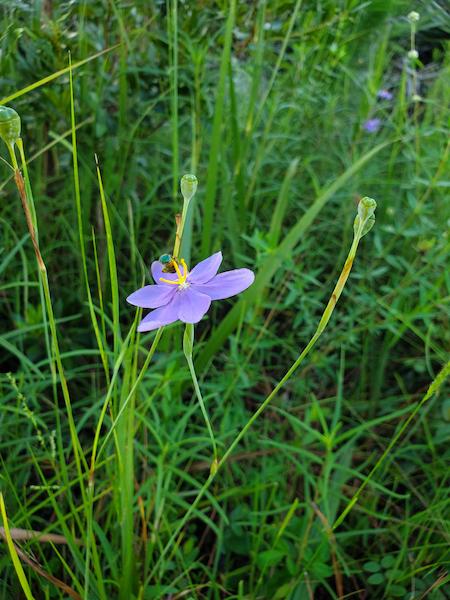
Celestial Lily (Nemastylis floridana)
This imperiled member of the iris family is endemic to Florida. These charming little flowers bloom in autumn afternoons. It's always a treat when I spot some on my bike rides.
Sweat bees like the one pictured are the primary pollinators of these plants.
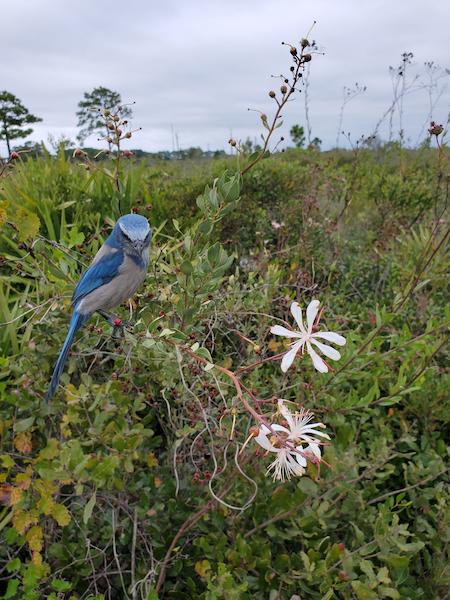
Tarflower (Bejaria racemosa)
Like most members of the heath family, Tarflower grows in habitats with acidic soil, like the Florida scrub.
Pictured with a Florida scrub jay (please don't feed them).
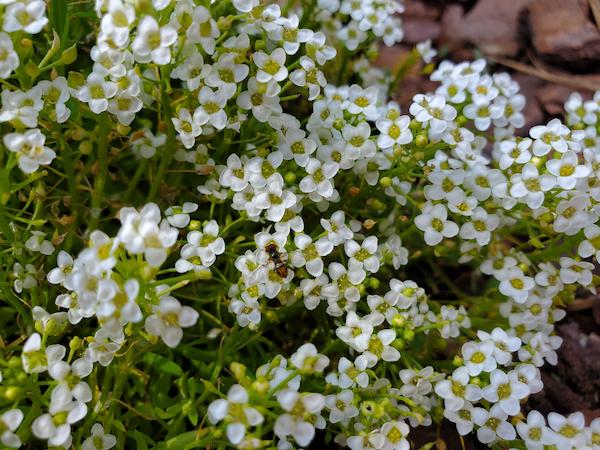
Sweet Alyssum (Lobularia maritima)
Native to the Mediterranean Basin, this plant is commonly grown in gardens. Its flowers smell strongly of honey and attract beneficial insects like this hover fly. Unfortunately, they don't like the wet summers in Florida, so they're grown as a winter annual here.
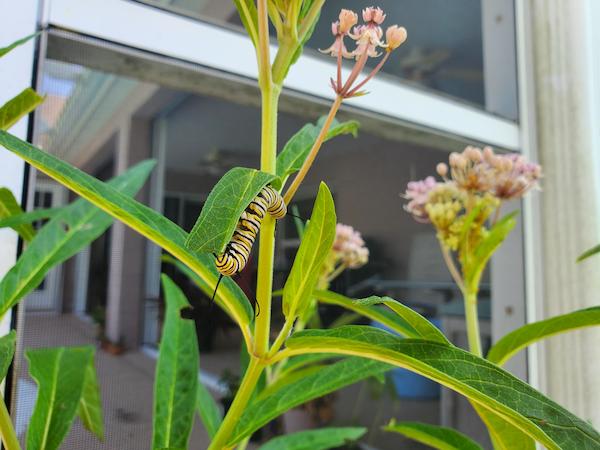
Swamp Milkweed (Asclepias incarnata)
Pink swamp milkweed's smooth leaves are the favored food source for the monarch butterfly's caterpillars. The caterpillars use the toxins in the plant to make themselves unpalatable to predators.
The plant's showy flowers attract lots of pollinators and smell great, too.
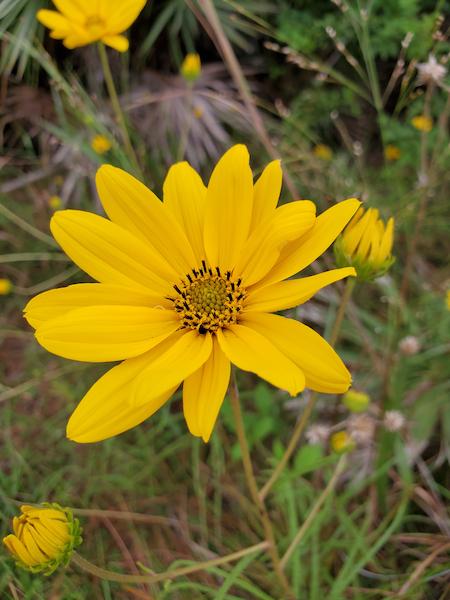
Swamp Sunflower (Helianthus angustifolius)
These beauties bloom in the autumn around the same time as the goldenrod.
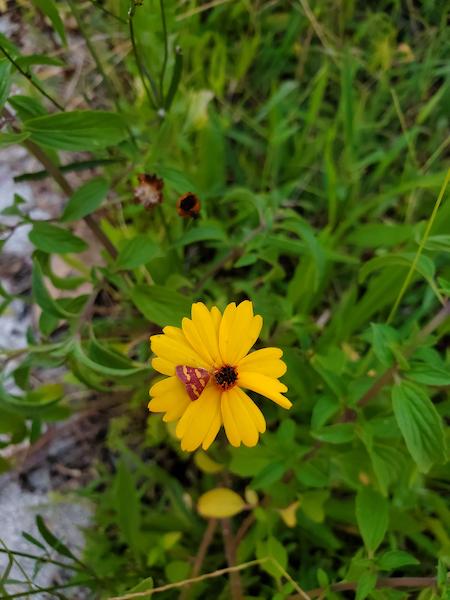
Leavenworth's Tickseed (Coreopsis leavenworthii)
The Florida state wildflower! These charming little flowers bloom year-round. You can often spot them near ponds. Will absolutely take over your garden, but they're pretty, so it's fine.
I think this little moth is a pyrausta.
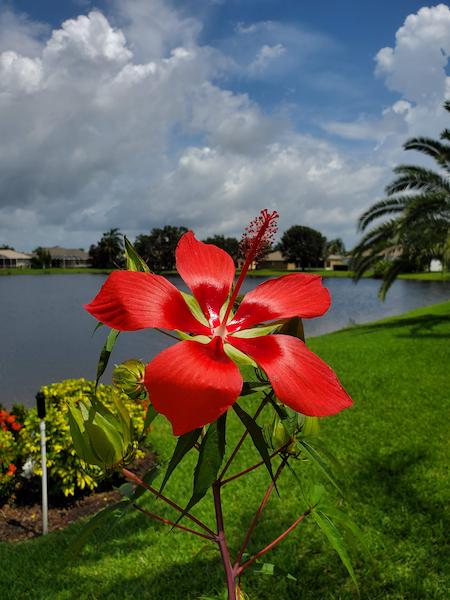
Scarlet Hibiscus (Hibiscus coccineus)
It's hard to describe just how red these flowers are. They're huge, too. This species is native to the southeast US and as far west as Texas.
